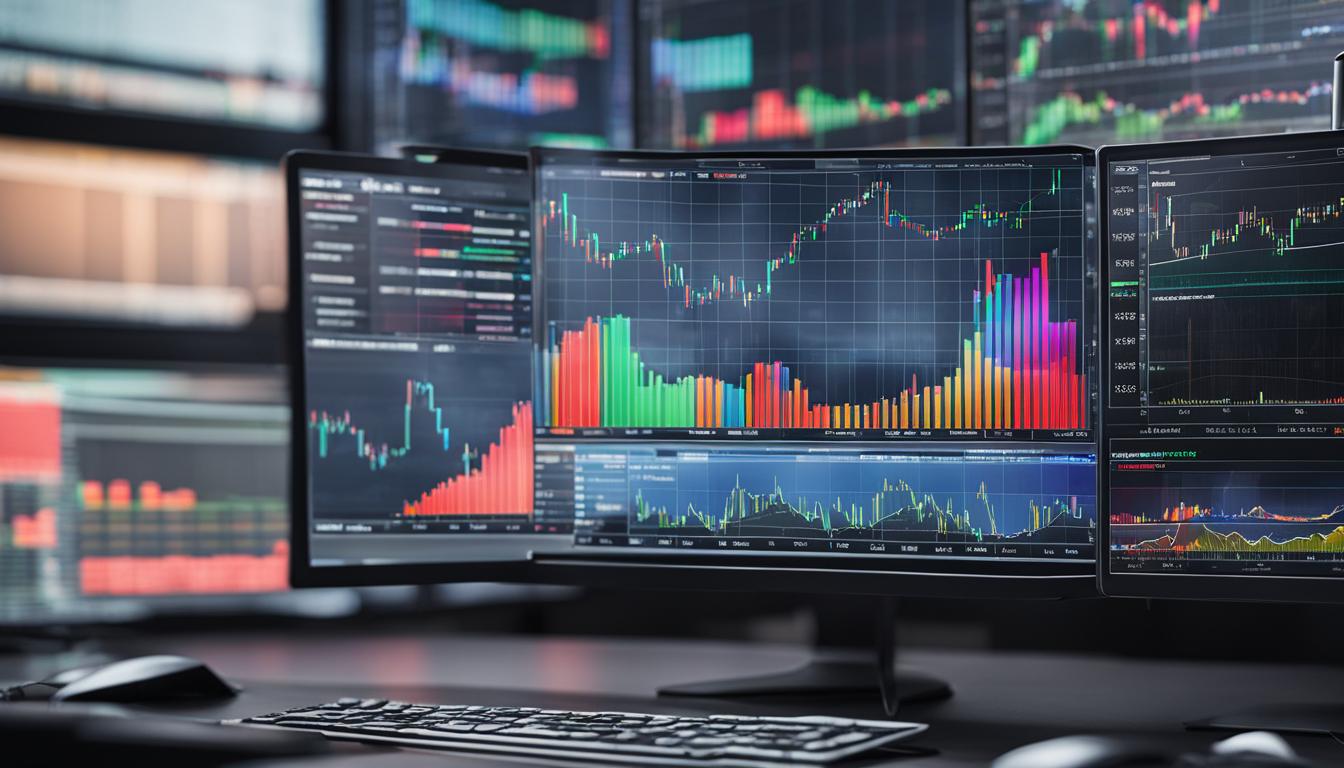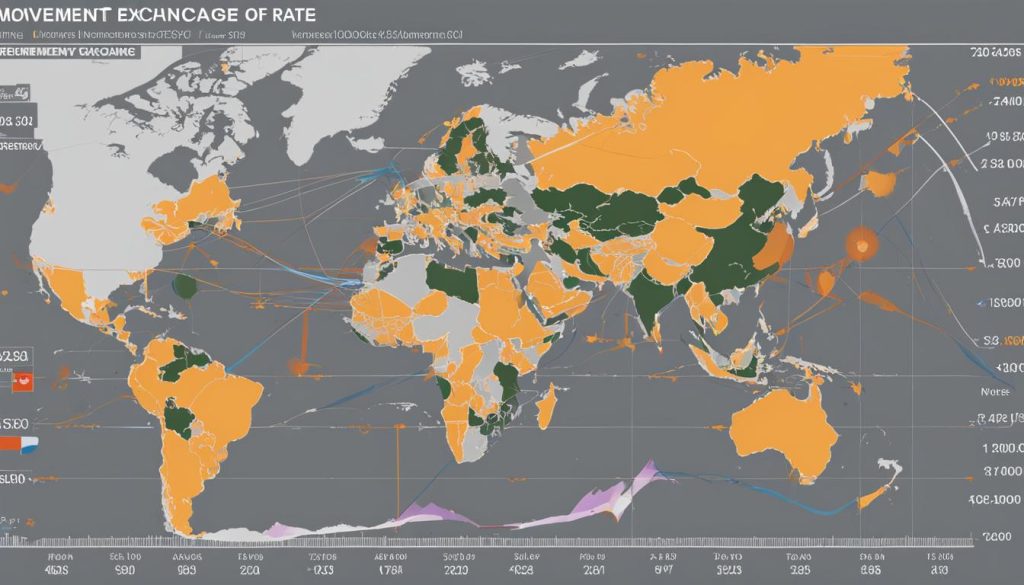As a critical component of technical analysis, leading indicators in forex trading offer traders a glimpse into future market movements, effectively providing a tactical advantage. Unlike their lagging counterparts, these forex trading indicators aim to predict changes in price action, granting bold traders the opportunity to position themselves ahead of new trends. Successfully leveraging the best leading indicators can potentially lead to insightful and profitable trading decisions.
Despite their predictive nature, leading indicators come with a caveat: their propensity to produce false forecasts. True mastery in forex trading arises from distinguishing between signals indicating genuine market shifts and those that falsely herald a reversal. This delicate balance requires not only understanding the indicators themselves but also skilfully integrating additional market analysis techniques. As we delve further into the world of forex trading strategies, the importance of both knowledge and caution becomes particularly evident.
Understanding Leading vs Lagging Indicators
Traders across the globe rely on various tools to navigate the complex forex markets. Among these tools, top forex indicators that categorize into leading and lagging are pivotal in informing trading decisions. This critical distinction helps traders deploy appropriate tactics for market conditions to push their strategies ahead of the competition.
The Role of Leading Indicators in Anticipating Trends
Leading technical indicators are designed to give traders an edge by signaling potential market movements before they materialize. Often considered as the front runners in forex analysis indicators, their primary utility lies in giving a heads up on forthcoming trend shifts, enabling traders to position themselves favorably. Whether it’s identifying the inception of a new bull run or foreseeing a possible market downturn, these indicators are indispensable in strategizing for what’s next.
Lagging Indicators: Confirmation and Risk Reduction
In contrast, lagging indicators are the conservative counterparts to their leading peers. They’re focused on substantiating established trends, offering confirmatory signals that help fortify a trader’s conviction in their positions. By prioritizing trend confirmation, these indicators offset the risk of premature entries and reinforce the strategy with an additional layer of security, even if it means stepping into the market a tad later.
Optimizing Trading Strategies with Indicator Types
The synergy between leading and lagging indicators can’t be overstated when it comes to refining a trader’s approach. Tapping into leading indicators can be particularly rewarding when the markets are range-bound, as they’re adept at catching the swings. Meanwhile, trending markets, where consistency is key, beckon for the use of lagging indicators. The artful interplay between the two types empowers traders to attune their strategies to any market pulse, drawing the best from both worlds.
Success in forex trading hinges on a nuanced understanding of both indicator classes. By leveraging each category’s strengths, traders can navigate market dynamics with greater confidence, making informed moves that are aligned with real-time shifts in currency valuations.
Key Characteristics of Leading Indicators
In the dynamic world of Forex, traders constantly leverage popular trading indicators to predict market momentum with greater accuracy. Understanding the unique traits of reliable forex indicators is imperative for those seeking to refine their forex trading strategies and secure a competitive edge in currency markets.
Identifying Overbought and Oversold Conditions
Leading indicators excel at signaling when a currency pair has reached unsustainable levels, either overbought or oversold. This foresight is crucial as it allows traders to anticipate potential market reversals before they materialize. Whereas overbought conditions suggest a potential sell-off, oversold conditions indicate a potential rally, making such insights invaluable for decision-making.
Avoiding False Signals and ‘Fakeouts’
While leading indicators are powerful tools, they are also prone to false signals, often termed as ‘fakeouts.’ These can lead traders to make premature entries or exits, resulting in suboptimal trades. To combat this, astute traders pair leading indicators with other forms of market analysis—such as fundamental reviews or considering economic reports—to validate the signal integrity, thereby ensuring a higher probability of accurate forecasting.
For example, a trader might look for convergence with price action patterns or use additional, reliable forex indicators in tandem to confirm the readings of a leading indicator like the Relative Strength Index (RSI) or Stochastic Oscillator. Such multi-pronged approaches can offer a buffer against the inherent risks of false signals and enhance the robustness of one’s trading strategy.
While no indicator is infallible, knowledge and prudent application of leading indicators can significantly enhance one’s trading repertoire. By being aware of their characteristics and potential pitfalls, traders can harness these tools to spot lucrative opportunities in the vast Forex market.
Top Forex Indicators to Predict Market Movements
Traders leveraging the volatility of the foreign exchange market require potent tools that can guide their decision-making processes. Effective forex indicators serve as beacons to illuminate potential paths in the ever-shifting landscape of forex trading. Two such prevailing beacons are the Stochastic Oscillator and the Relative Strength Index (RSI), each providing unique insights into market conditions and momentum. Their foresight is invaluable when formulating strategies, making them leading indicators in forex trading.
Stochastic Oscillator: Gauging Market Momentum
The Stochastic Oscillator stands out as a pivotal tool among forex trading indicators, designed to identify the speed and trajectory of market momentum. By examining the position of a currency’s closing price relative to its high-low range, traders can pinpoint the moments just before a potential change in the market tide. To maximize the effectiveness of the Stochastic Oscillator, it is critical for traders to interpret its readings in conjunction with prevailing market trends and other technical analyses.
Relative Strength Index (RSI): Evaluating Market Conditions
Comparably, the Relative Strength Index (RSI) quantifies the velocity and magnitude of directional price movements. A trusted compass in the realm of forex trading indicators, the RSI highlights overbought or oversold territories, enabling traders to make informed predictions regarding potential pullbacks or continuations. As an effective forex indicator, the RSI helps in measuring the resilience of current price trends and the probability of their sustenance or reversal.
Despite their proven track records, both the Stochastic Oscillator and the RSI should be employed with a degree of caution. Their predictive prowess can sometimes be clouded by the false signals they emit, particularly in non-trending or highly volatile market periods. Forex trading demands a blend of strategic acumen and analytical precision, and these leading indicators serve as sophisticated auxiliary tools within a broader, comprehensive trading system.
Integrating Leading Indicators with Other Technical Tools
To enhance the efficacy of leading indicators in forex trading, incorporating additional technical analysis tools can offer a more robust approach to market evaluation. Through this integration, traders are not only equipped with potential early signals from leading indicators but can also interpret and validate these signals using additional methods. This multi-faceted analysis supports more informed decision-making and can substantially improve the accuracy of trade entries and exits.
Enhancing Analysis with Japanese Candlesticks and Chart Patterns
Japanese candlesticks and chart patterns are indispensable tools in the trader’s toolkit, providing rich information about market sentiment and potential price movements. When used alongside forex analysis indicators, these techniques can cast light on the strength of trends and highlight key levels where price reversals are more likely to occur. For instance, a leading indicator might suggest an imminent bullish reversal, which, if confirmed by a bullish engulfing candlestick pattern, can provide a stronger case for an upward price trajectory.
The Importance of Support and Resistance in Forex Analysis
Identifying support and resistance levels is essential when using leading indicators. These levels serve as benchmarks whereby prices consistently stall or reverse, signifying the points of significant buying or selling pressure. A leading indicator may signal a buying opportunity, but if this signal occurs near a strong resistance level, the risk of a false breakout increases. Therefore, understanding and employing support and resistance levels can help validate the credibility of the signals from popular trading indicators, allowing for more reliable trade setups.
In conclusion, a holistic approach that marries leading indicators with other technical analysis methods creates a more complete and nuanced view of the markets. Traders who effectively amalgamate these tools are better prepared to navigate the complex and dynamic forex market.
Conclusion
In the intricate world of forex trading, deploying leading indicators in forex trading strategies can be a powerful way to gain an edge in predicting market movements. These tools, when understood and applied astutely, have the potential to drive trading accuracy and increase profitability. However, the beneficial capabilities of these indicators come with inherent limitations. A critical aspect to remember is the tendency for leading indicators to produce false signals, which necessitates a cautious approach in their usage.
Mastering Forex Trading Strategies with Reliable Leading Indicators
Achieving mastery in forex trading strategies is not solely about recognizing the best leading indicators but also about understanding their correct application within the market’s context. To leverage the full advantages of leading indicators, traders must take into account the timing of the markets and the economic indicators that influence currency movements. The capacity to distinguish between true market reversals and misleading signals is crucial and can only be refined through experience and continuous analysis.
Continuous Learning and Practice: The Path to Trading Proficiency
The journey to becoming proficient in forex trading is unending. The landscape is constantly evolving, and as such, traders must commit to continuous learning and consistent practice. Integrating various analytical tools alongside leading indicators enriches trading strategies and contributes to more informed decision-making. Through a disciplined and educated approach, traders can enhance their expertise and confidently navigate the forex market, capitalizing on the predictive strengths of leading indicators while adeptly managing the associated risks.
FAQ
Leading indicators in forex trading are tools that provide signals before a new trend or a reversal occurs. They’re designed to anticipate future price movements by assessing if a currency pair is overbought or oversold, thus allowing traders to act before the change happens.
Leading indicators give advance warning of potential price movements, while lagging indicators provide confirmation of those movements after they have begun. Leading indicators help traders to enter the market early, whereas lagging indicators reduce the risk of false signals but may result in later entries.
To avoid false signals or ‘fakeouts’ when using leading indicators, traders should use them in conjunction with other technical analysis tools such as chart patterns, Japanese candlesticks, and support and resistance levels to confirm the signals before taking action.






